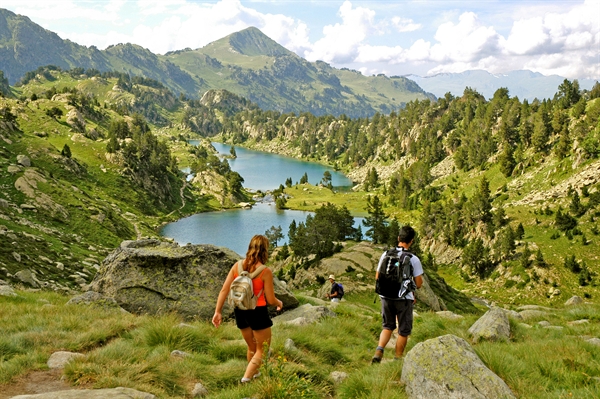
Living Paths
Living Paths – a walk around the National Park
This nature tourism initiative makes it possible to recover, revalue, indicate and conserve the historic paths which run around the Aigüestortes and Estany de Sant Maurici National Park and use them for trekking. This network of footpaths passes through the comarques (local districts) of L'Alta Ribagorça, the Vall d’Aran, El Pallars Sobirà and El Pallars Jussà.
To make this project a reality, priority was given to rehabilitating a series of traditional paths for use by non-motorised traffic. Many of the paths in questions are over a thousand years old, while the rest date back to at least the medieval period. They are footpaths that once connected the villages and valleys that surround the National Park and are routes that have been used since time immemorial by travellers, shepherds, drovers, soldiers, guards, smugglers and - of course – the local population.
Trekking, culture and nature
The 238 km of traditional paths will show visitors their human and natural landscapes and help them to discover the history and culture of the local area. These paths interconnect the six valleys (the Valls d’Àneu, Vall d’Àssua, Vall Fosca, Vall de Boí, Vall de Barravés and Vall d’Aran) that form part of what is now the Aigüestortes and Estany de Sant Maurici National Park and are connected by three historic mountain passes: the Port de Vielha, Port de la Bonaigua and Port de Rus.
The walk around the National Park can be completed in either 7 or 9 1-day stages, according to the type of trekking that walkers wish to do and their physical condition. Each stage finishes at a village, allowing hikers to spend the night in hotels or shelters. They can also take advantage of these overnight stays to discover and enjoy the villages and hamlets that they visit and the rich cultural heritage of their Romanesque art and architecture.
For more information: Camins Vius
Pictures
